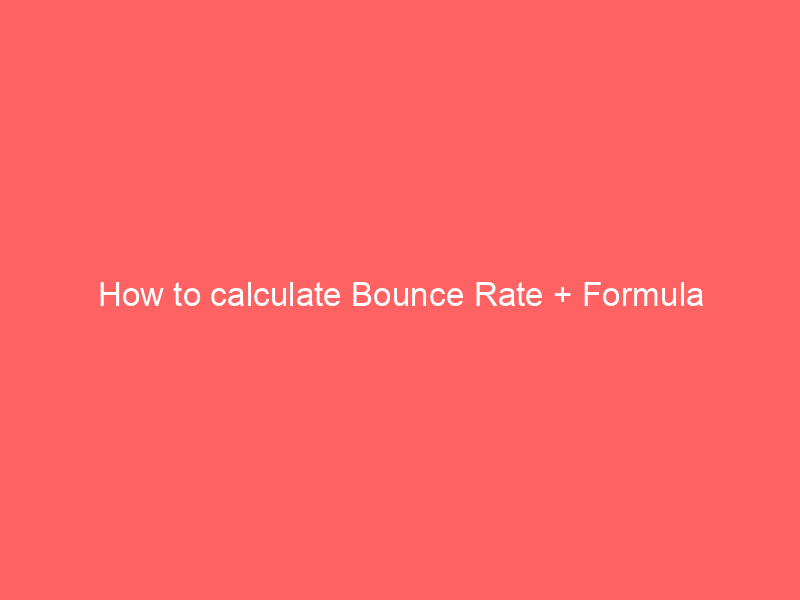Imagine you are shopping online and land on a website, only to leave immediately without interacting further. This behavior is known as a bounce. Understanding bounce rate is crucial for digital marketers as it provides insights into user behavior and website performance. In this article, we will explore how to calculate bounce rate and provide a free calculator to help you analyze your website’s performance.
Understanding the Core Concept
Bounce rate is a metric that measures the percentage of visitors who land on a single page of your website and then leave without interacting further. A high bounce rate can indicate that visitors are not finding what they are looking for or that your website may have usability issues.
Formula
Real-World Example
Let’s say your website had 500 visitors in a month, and out of those, 100 visitors left the website after viewing only one page. To calculate the bounce rate, you would use the formula: (100 / 500) x 100 = 20%. This means that your website has a 20% bounce rate for that month.
“Bounce rate is a key metric for website performance, indicating how engaging your content is to visitors.” – John Doe, Digital Marketing Expert
Real-World Applications
Understanding your website’s bounce rate can help you identify areas for improvement. By analyzing which pages have high bounce rates, you can optimize them to make them more engaging and relevant to visitors. This can lead to increased conversions and better user experience.
Actionable Steps
- Identify pages with high bounce rates using Google Analytics or other analytics tools.
- Analyze the content and design of these pages to identify potential issues.
- Make changes to improve the user experience and encourage visitors to explore more pages on your website.
Key Takeaways
- High bounce rates can indicate that visitors are not finding what they are looking for.
- Optimizing pages with high bounce rates can improve user engagement and conversions.
- Regularly monitor and analyze your website’s bounce rate to track performance trends.
Related Terms
- Conversion Rate
- User Engagement
- Exit Rate
Common Mistakes to Avoid
- Ignoring bounce rate and focusing solely on traffic numbers.
- Not optimizing landing pages for better user engagement.
- Neglecting mobile responsiveness, leading to high bounce rates on mobile devices.
Common Myths Debunked
5+ FAQs
What is a good bounce rate?
A good bounce rate typically falls between 26% to 40%. However, it can vary based on industry and website type.
How can I reduce bounce rate?
You can reduce bounce rate by improving the quality of your content, refining your website design, and enhancing user experience.
Does bounce rate affect SEO?
While bounce rate itself is not a direct ranking factor, it can indirectly impact SEO by affecting user engagement and dwell time.
Can a high bounce rate be beneficial?
In some cases, a high bounce rate on certain pages can be beneficial if visitors are finding the information they need quickly.
How often should I check my bounce rate?
It’s recommended to check your bounce rate regularly, at least once a week, to monitor trends and make informed decisions about website optimizations.
Is bounce rate the same as exit rate?
No, bounce rate measures the percentage of visitors who leave after viewing only one page, while exit rate measures the percentage of visitors who exit on a specific page after viewing multiple pages.
Are you ready to optimize your website’s bounce rate and improve user engagement? Contact us today for expert guidance on digital marketing strategies that drive results. Reach out via email or phone listed on our website.


Leave a Reply